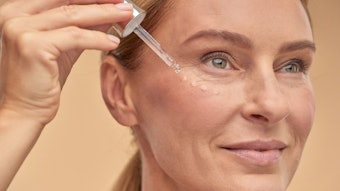A recent study1 published in Skin Pharmacoloy and Physiology examined the delivery of epigallocatechin-3-gallate (EGCG) and quercetin from green tea and ginkgo biloba extracts into the skin from cosmetic formulations. According to the abstract, Camellia sinensis (green tea) and Ginkgo biloba extracts in cosmetic formulations have been suggested to protect the skin against UV-induced damage and skin aging. Thus, the human skin penetration of their major flavonoids was assessed to verify whether they penetrate and remain in the skin to exert their proposed effects.
The aim of the study was to evaluate the penetration of EGCG and quercetin from green tea and G. biloba extracts incorporated into cosmetic formulations. Fresh dermatomed human Caucasian skin from abdominal surgery mounted on static Franz diffusion cells was utilized. The skin samples were mounted between two diffusion half-cells and 10 mg/cm2 of formulations supplemented with 6% of green tea or G. biloba extract were applied to the skin surface. The receptor fluid was removed after 6 hr and 24 hr and analyzed by HPLC for the quantification of the flavonoids. The stratum corneum was removed by tape stripping and immersed in methanol, and the epidermis was mechanically separated from the dermis and triturated in methanol to extract EGCG and quercetin.
The results showed that the flavonoids penetrated the skin without reaching the receptor fluid. The majority of EGCG was quantified in the stratum corneum (0.87 µg/cm2), which was statistically higher than the EGCG concentrations found in viable epidermis (0.54 µg/cm2) and in the dermis (0.38 µg/cm2). The majority of quercetin was quantified in the viable epidermis (0.23 µg/cm2), which was statistically higher than the EGCG concentration found in the stratum corneum layer (0.17 µg/cm2).
It was concluded from this study that EGCG and quercetin from green tea and G. biloba extracts vehiculated in cosmetic formulations presented good skin penetration and retention, which could favor their skin effects.
References
1. Epigallocatechin-3-Gallate and Quercetin from Green Tea and Ginkgo biloba Extracts Vehiculated in Cosmetic Formulations, Skin Pharmacology and Physiology, 22 6 (2009)










